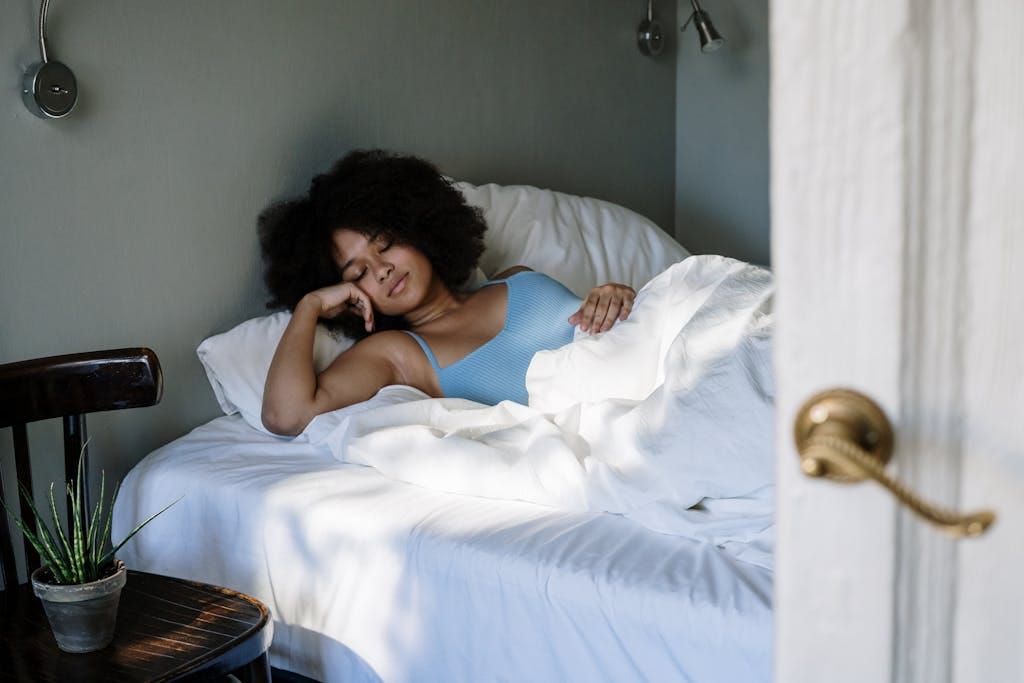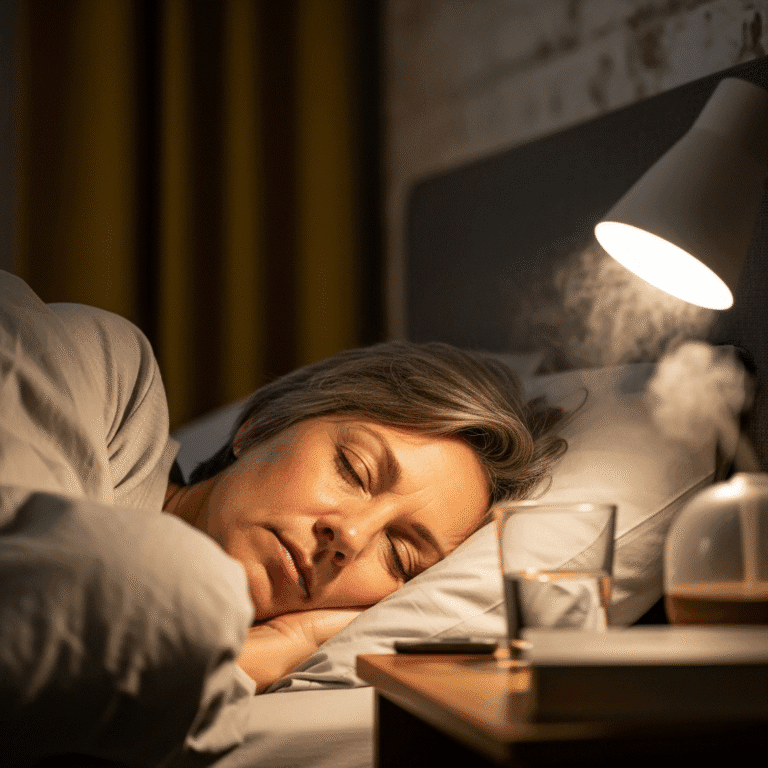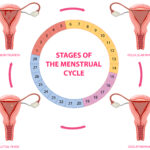FREE SHIPPING OVER $50
Your Favorite Sleeping Position Is Secretly RUINING Your Health

We all have that one sleeping position that just feels “right.” Maybe you’re a lifelong stomach sleeper, cozy on your belly with your face buried in the pillow. Perhaps you curl up tightly on your side, nestled into a fetal embrace. Or maybe you prefer the expansive comfort of lying flat on your back. Whatever your go-to, it’s a deeply ingrained habit, a personal haven you drift into each night.
But here’s a startling truth: that beloved sleeping position might be silently sabotaging your health as you rest. What feels comfortable for a few hours can, over time, lead to aches, pains, restless nights, and even contribute to more serious health risks and premature signs of aging. It’s a hidden enemy operating while you’re completely unaware.
The Hidden Truth: How Your Sleep Posture Impacts Your Body
Sleep isn’t just about closing your eyes for a few hours; it’s a vital, complex process during which your body repairs itself, consolidates memories, and rejuvenates for the next day. And just like your posture during waking hours affects your spine and muscles, your posture during sleep plays an equally critical role.
Think about it: you spend roughly one-third of your life in bed. If your body is contorted or misaligned for hours on end, night after night, that consistent pressure and strain inevitably take a toll. Certain sleeping positions can put undue stress on your spine, compress organs, restrict breathing, or even affect your skin. Over time, these subtle stresses accumulate, leading to chronic issues that can significantly impact your overall health and quality of life.
The Culprits: Sleeping Positions Secretly Hurting You
While every individual is different, health experts and chiropractors generally agree that some sleeping positions are far more detrimental than others. Let’s uncover the positions that might be secretly undermining your health:
1. Stomach Sleeping: The Top Offender
If you’re a stomach sleeper, this might be tough to hear, but this position is often considered the absolute worst for your spine and overall health.
- Why it’s bad: When you sleep on your stomach, you’re forced to turn your head to one side to breathe. This unnatural rotation twists your neck for hours, putting immense strain on your cervical spine (your neck bones). Simultaneously, your stomach position flattens the natural curve of your lower back, leading to spinal misalignment.
- Health Risks: This translates directly to chronic neck pain, stiffness, and nagging back pain. It can also contribute to tension headaches, nerve impingement, and even TMJ issues. Furthermore, pressing your face into a pillow for eight hours a night can literally iron in premature facial wrinkles over time, especially on your forehead and around your eyes and mouth.
2. Extreme Fetal Position: Overly Curled Side Sleeping
Many side sleepers adopt a tightly curled fetal position, with knees pulled high towards the chest and the spine excessively rounded. While some side sleeping is good, this extreme version can be problematic.
- Why it’s bad: Being overly curled up restricts the movement of your diaphragm, which can hinder deep breathing and lead to shallower sleep. It also places uneven pressure on your hips and shoulders, and can contribute to general joint stiffness.
- Health Risks: This can result in joint pain in your hips, shoulders, and knees. For individuals with respiratory issues, it might exacerbate breathing difficulties or even make snoring worse. The constant compression on one side of your body can also impede normal circulation over long periods.
3. Side Sleeping Without Proper Support
Side sleeping is a very common and generally better position than stomach sleeping, but without the right support, it still has its drawbacks.
- Why it’s bad: If your head and neck aren’t properly aligned with your spine (often due to a too-thin or too-thick pillow), or if your top leg isn’t supported, your spine can sag. This creates strain on your neck, shoulders, and hips. Also, consistently pressing one side of your face into a pillow can contribute to “sleep wrinkles” (compression wrinkles) on that side.
- Health Risks: You might experience shoulder pain, hip pain, and neck pain. Long-term, this can lead to spinal issues and discomfort. The uneven pressure on your face over the years can indeed etch lines into your skin that differ from typical expression lines.
Beyond Aches: The Broader Health Impacts of Poor Sleep Posture
The consequences of consistently poor sleep posture extend far beyond just waking up with a stiff neck. They can impact your entire body and your overall health:
- Spinal Health and Chronic Pain: Your spine is the central pillar of your body, protecting your nervous system. Sustained misalignment from bad sleeping positions can lead to chronic inflammation, nerve compression, degenerative disc disease, and persistent back, neck, and joint pain that affects your daily life.
- Circulation and Organ Function: Certain positions can put undue pressure on blood vessels or internal organs. For instance, stomach sleeping can compress abdominal organs, potentially affecting digestion. Restricted blood flow, especially to limbs, can lead to numbness or tingling.
- Breathing and Sleep Disorders: Positions that obstruct your airways, like stomach sleeping or a very curled fetal position, can worsen or even contribute to snoring and obstructive sleep apnea. Sleep apnea is a serious condition where breathing repeatedly stops and starts during sleep, leading to fragmented sleep, daytime fatigue, and increased risk of heart disease, high blood pressure, and stroke.
- Skin Health and Premature Aging: Those infamous “sleep wrinkles” aren’t just a myth. Repeatedly pressing your face into a pillow in certain positions can create creases that, over time, become permanent lines. This is a form of premature aging on your face, independent of sun exposure or expression lines.
- Overall Sleep Quality: When your body is uncomfortable, you toss and turn more, leading to fragmented and non-restorative sleep. Poor sleep quality directly impacts your energy levels, mood, cognitive function (focus, memory), and weakens your immune system, making you more susceptible to illness.
The Antidote: Healthier Sleeping Positions and How to Adopt Them
The good news is that you can change your sleeping position and improve your sleep health. It takes patience and consistency, but the health benefits are well worth the effort.
1. Back Sleeping: The Preferred Option for Many
Often hailed as the best position for spinal alignment, back sleeping allows your head, neck, and spine to rest in a neutral position.
- Benefits: Optimal spinal alignment, reduces pressure points, can alleviate hip and knee pain, can help with acid reflux (if your head is elevated slightly), and can prevent those unsightly “sleep wrinkles” because your face isn’t pressed against a pillow.
- Tips: Use a relatively thin, supportive pillow that cradles the natural curve of your neck without propping your head too high. Some people find that placing a pillow under their knees helps relieve pressure on the lower back and maintain the spine’s natural curve.
- Caveats: Back sleeping can worsen snoring and sleep apnea for some individuals, as gravity can cause the tongue to fall back and obstruct the airway. If you experience these issues, consult a doctor.
2. Side Sleeping: The Next Best (with Proper Support)
For most people, side sleeping is comfortable and beneficial, especially with the right setup.
- Benefits: Can help reduce snoring, often recommended for pregnant individuals (left side), and can be beneficial for digestion.
- Tips:
- Pillow is Key: Use a firm, thick pillow that keeps your head and neck aligned with your spine, preventing your head from dropping too low or propping up too high.
- Knee Pillow: Place a pillow between your knees to keep your hips, pelvis, and spine aligned. This prevents your top leg from pulling your spine out of alignment.
- Arm Position: Avoid tucking your arm straight under your head, as this can cut off circulation. Keep your arms relaxed.
- Silk Pillowcase: Consider a silk or satin pillowcase to reduce friction on your face, helping to prevent “sleep wrinkles.”
Training Yourself to Switch:
Changing a deeply ingrained sleep habit isn’t easy, but it’s possible:
- Pillow Barriers: For stomach sleepers trying to switch to their back, place pillows around your body to make it uncomfortable to roll over.
- Tennis Ball Trick: Sew a tennis ball into the front pocket of a shirt worn to bed (for stomach sleepers) or the back (for back sleepers trying to switch to side). The discomfort will prompt you to change position.
- Patience and Consistency: It won’t happen overnight. Be patient with yourself, and consistently try to start in the desired position. Your body will eventually adapt.
Wake Up Revitalized: Reclaiming Your Health Through Better Sleep
Your favorite sleeping position might indeed be secretly undermining your health, leading to chronic pain, visible signs of aging, and compromised overall well-being. But the good news is that awareness is the first step towards transformation.
By understanding the unique drawbacks of certain sleep postures and actively working to adopt healthier ones, like back sleeping or properly supported side sleeping, you can make a profound difference. Combine this with optimizing your sleep environment and embracing consistent sleep habits, and you’ll not only alleviate nagging aches but also boost your energy levels, improve your appearance, and enhance your overall health for years to come. It’s time to stop letting your sleep hurt you and start letting it truly heal.
Related Articles
- Is This Foot Sensation a Red Flag? It Could Be an Early Warning of Diabetes
- Pink Eye SOS: 8 Home Remedies That Stop Discomfort FAST
- Your Coffee Habit for Longevity: Drink It This Way to Live Longer (The Secret Revealed!)
- Tired All the Time? This Powerhouse Supplement Boosts Focus, Stamina & Overall Vitality
- The Desk Job Antidote: Experts Reveal How Much Exercise Truly Erases A Full Day of Sitting







